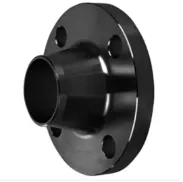-
Cangzhou Yulong Steel Co., Ltd.
-
Phone:
+86 13303177267 -
Email:
admin@ylsteelfittings.com
- English
- Arabic
- Italian
- Spanish
- Portuguese
- German
- kazakh
- Persian
- Greek
- French
- Russian
- Polish
- Thai
- Indonesian
- Vietnamese
- Zulu
- Korean
- Uzbek
- Hindi
- Serbian
- Malay
- Ukrainian
- Gujarati
- Haitian Creole
- hausa
- hawaiian
- Hebrew
- Miao
- Hungarian
- Icelandic
- igbo
- irish
- Japanese
- Javanese
- Kannada
- Khmer
- Rwandese
- Afrikaans
- Albanian
- Amharic
- Armenian
- Azerbaijani
- Basque
- Belarusian
- Bengali
- Bosnian
- Bulgarian
- Catalan
- Cebuano
- China
- China (Taiwan)
- Corsican
- Croatian
- Czech
- Danish
- Esperanto
- Estonian
- Finnish
- Frisian
- Galician
- Georgian
- Kurdish
- Kyrgyz
- Lao
- Latin
- Latvian
- Lithuanian
- Luxembourgish
- Macedonian
- Malgashi
- Malayalam
- Maltese
- Maori
- Marathi
- Mongolian
- Myanmar
- Nepali
- Norwegian
- Norwegian
- Occitan
- Pashto
- Dutch
- Punjabi
- Romanian
- Samoan
- Scottish Gaelic
- Sesotho
- Shona
- Sindhi
- Sinhala
- Slovak
- Slovenian
- Somali
- Sundanese
- Swahili
- Swedish
- Tagalog
- Tajik
- Tamil
- Tatar
- Telugu
- Turkish
- Turkmen
- Urdu
- Uighur
- Welsh
- Bantu
- Yiddish
- Yoruba

Oct . 22, 2024 18:38 Back to list
Unlock the Power of GOST Flanges: Your Key to Secure Industrial Connections
When it comes to industrial piping systems, the strength and reliability of your connections can make or break your operations. That’s where GOST flanges come into play. Designed to withstand the harshest conditions, these flanges are more than just pipe connectors—they’re a critical part of keeping industries running smoothly and safely. In this article, we will describe in detail what makes GOST flanges indispensable, their application scenarios, their incredible rigidity, and the different GOST flange types that cater to your specific needs.
GOST Flanges: Built for Industrial Strength and Versatility
So, what exactly is a GOST flange used for? In simple terms, these flanges are essential for joining pipes, valves, pumps, and other industrial equipment, especially in high-pressure and high-temperature environments. Specifically engineered to comply with the GOST standard flanges, which are widely used in Russia and Eastern Europe, they are a vital component in industries like oil and gas, petrochemicals, power generation, and chemical processing.
The primary function of a GOST flange is to create a strong, secure connection between different sections of a piping system, ensuring a leak-proof seal under the most extreme conditions. What makes them unique is their compatibility with various industrial applications that demand durability, high performance, and easy maintenance. Whether it’s transporting corrosive fluids or managing high-pressure steam lines, GOST flanges are designed to withstand all challenges.
Use Scenarios of GOST Flanges: Designed for Tough Environments
GOST flanges are versatile, but where do they perform best? Their application scenarios are often centered around demanding industrial environments. For example, in the oil and gas industry, they are critical in both upstream and downstream processes, from transporting raw crude oil through pipelines to managing refined petroleum products. GOST flange dimensions are designed to fit perfectly into high-pressure pipelines, offering seamless connections in environments where safety and security are paramount.
In chemical processing plants, GOST flanges are relied upon to handle the transportation of hazardous chemicals. Their robust build ensures they can tolerate corrosive substances without degrading or compromising the system’s integrity. GOST standard flanges are also found in power generation facilities, where they help manage the flow of steam, water, and other energy sources, ensuring uninterrupted and safe operations.
Whether in rugged outdoor environments or within intricate factory systems, GOST flanges offer the reliability required to handle a variety of fluids and gases under pressure, making them indispensable in industries where performance and safety go hand-in-hand.
Unmatched Rigidity and Durability of GOST Flanges
One of the standout characteristics of GOST flanges is their remarkable rigidity and durability. These flanges are built to last, often using materials like carbon steel, stainless steel, or alloy steel to provide superior resistance to both mechanical stress and environmental factors such as corrosion. This rigidity ensures that GOST flanges can withstand high pressures and temperatures without deforming or compromising the seal.
The rigid design is particularly important in preventing flange failure in critical systems. When working in high-stress environments, such as oil rigs or chemical plants, any compromise in the flange’s structural integrity can lead to catastrophic failures, such as leaks or blowouts. With GOST flanges, you can be assured of long-term performance, even under the most demanding conditions.
Additionally, their design adheres to the GOST 33259 flange dimensions, ensuring that every flange meets strict engineering standards for consistency and performance. Whether your system is under constant high pressure or exposed to corrosive materials, GOST flanges maintain their strength and integrity over time, offering peace of mind for operators and engineers alike.
Types of GOST Flanges: Meeting Diverse Industrial Needs
GOST flanges come in a variety of types, each designed for specific applications and system requirements. Common GOST flange types include welding neck flanges, slip-on flanges, and blind flanges. Welding neck flanges are particularly suited for high-pressure applications where a strong and durable connection is essential. They are welded to the pipe, providing a reinforced joint that can handle stress from both internal pressure and external forces.
Slip-on flanges are another popular option, used in lower-pressure applications where the connection does not need to be as robust as a welded joint. These flanges are slipped over the pipe and then welded in place, making them easier to install and align, especially in larger piping systems.
Blind flanges, meanwhile, are used to seal off the end of a piping system, preventing fluid from flowing through a particular section of the pipe. These are commonly used during maintenance or when the system needs to be temporarily closed off.
Each type of GOST flange is designed with specific industrial applications in mind, ensuring that no matter what your needs are, there’s a flange to meet them. Their diverse designs and sizes make them adaptable to a wide range of systems, ensuring maximum performance and safety across industries.
In conclusion, GOST flanges offer a comprehensive solution for industrial piping systems. With their unmatched strength, durability, and variety of types, they provide reliable and secure connections in some of the harshest environments. Whether you need to manage high-pressure pipelines or seal off sections of your system, GOST flanges offer the performance you can trust.
Latest news
-
ANSI 150P SS304 SO FLANGE
NewsFeb.14,2025
-
ASTM A333GR6 STEEL PIPE
NewsJan.20,2025
-
ANSI B16.5 WELDING NECK FLANGE
NewsJan.15,2026
-
ANSI B16.5 SLIP-ON FLANGE
NewsApr.19,2024
-
SABS 1123 FLANGE
NewsJan.15,2025
-
DIN86044 PLATE FLANGE
NewsApr.19,2024
-
DIN2527 BLIND FLANGE
NewsApr.12,2024
-
JIS B2311 Butt-Welding Fittings LR/SR 45°/90° /180°Seamless/Weld
NewsApr.23,2024















